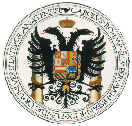The ADELEX Computer Adaptive Test measures the receptive lexical competence of speakers of English as a foreign language, and has been designed based on the first 6,000 words of a pedagogical frequency list, so this is the maximum level of competence covered by the program. Therefore, the test is primarily aimed at users at levels B2 to C1 according to the CEFRL.
The ADELEX CAT is an adaptive test: the items offered to the user adapt progressively to the skill they show in each answer, until an accurate estimation of the user’s competence is obtained.
Instructions
The user must register in the system first. Once registration is completed, they should select “Test 1” and click the “Start” key.
In each question, the user must select the word that is semantically related to the prompt word, with a maximum of 30 seconds per question.
The ADELEX CAT will offer each user a maximum of 30 items, although it’s not always necessary to complete all of them since the program stops execution when an accurate estimation is obtained.
At the end, the program provides a comprehensive report of the results.
Further information
López-Mezquita Molina, M. T. 2010. “ADELEX CAT: A computer adaptive test for the lexical evaluation of university students”. In M. Moreno Jaén, F. Serrano Valverde & M. Calzada Pérez (eds.), Exploring new paths in language pedagogy: Lexis and corpus-based language teaching. (pp. 271-286). London: Equinox.
ADELEX CAT has been designed and carried out within the ADELEX research project (R&D HUM2007-61766 and Andalusian Research Project HUM825), coordinated by Dr Carmen Pérez Basanta.
Project members:
- Carmen Pérez Basanta (coordinator and supervisor)
- Francisco Gutiérrez Martín
- María Teresa López-Mezquita Molina
- María Moreno Jaén
Contact
María Moreno Jaén (mmjaen@ugr.es)
Copyright©2009-2025
